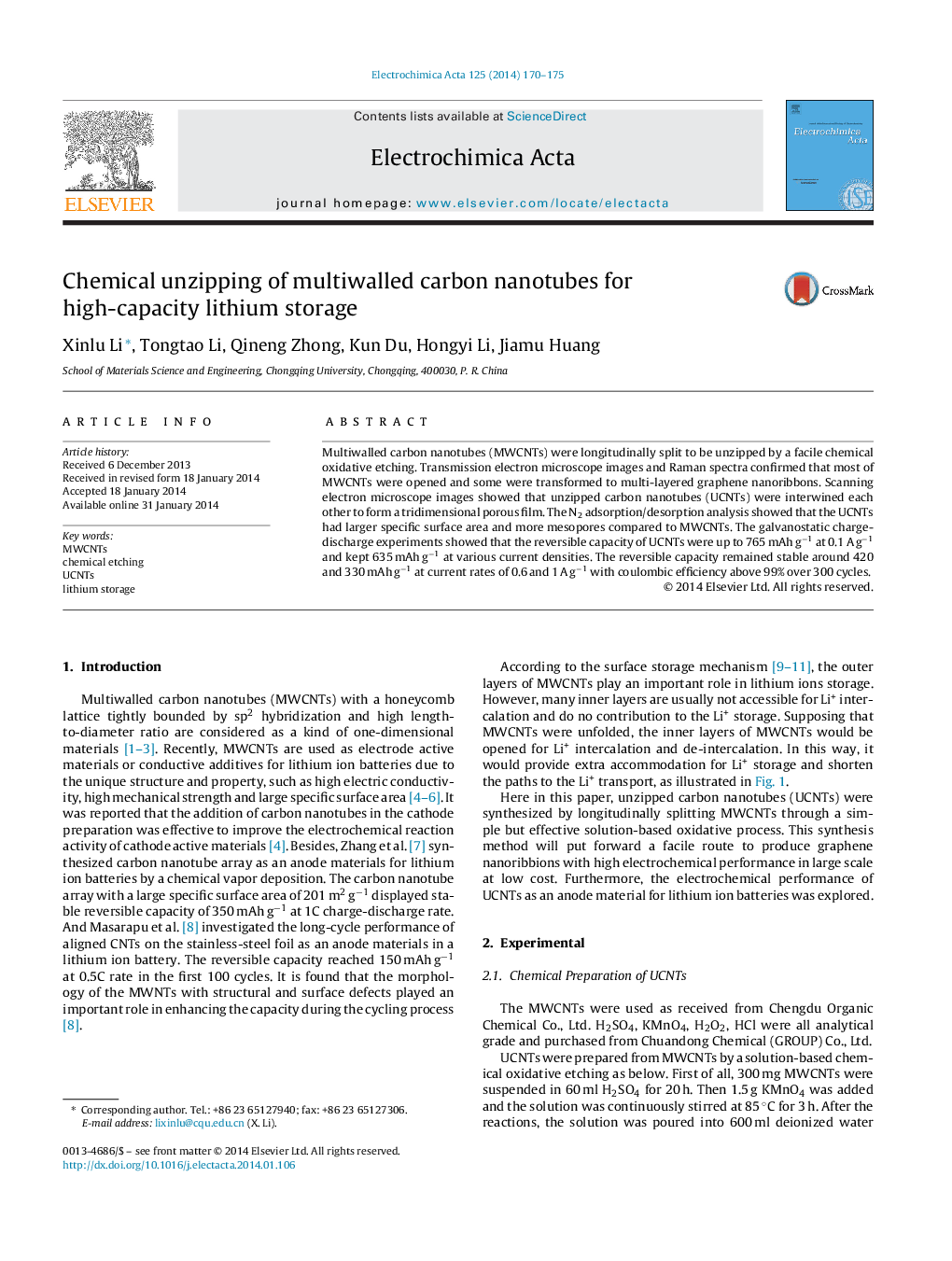| Article ID | Journal | Published Year | Pages | File Type |
|---|---|---|---|---|
| 186211 | Electrochimica Acta | 2014 | 6 Pages |
•MWCNTs were longitudinally split to be unzipped by a chemical oxidative etching.•UCNTs were self-folded and entangled to interlace a nanoporous 3D network.•UCNTs show high reversible Li+ storage, good rate capability and cycle stability.
Multiwalled carbon nanotubes (MWCNTs) were longitudinally split to be unzipped by a facile chemical oxidative etching. Transmission electron microscope images and Raman spectra confirmed that most of MWCNTs were opened and some were transformed to multi-layered graphene nanoribbons. Scanning electron microscope images showed that unzipped carbon nanotubes (UCNTs) were interwined each other to form a tridimensional porous film. The N2 adsorption/desorption analysis showed that the UCNTs had larger specific surface area and more mesopores compared to MWCNTs. The galvanostatic charge-discharge experiments showed that the reversible capacity of UCNTs were up to 765 mAh g−1 at 0.1 A g−1 and kept 635 mAh g−1 at various current densities. The reversible capacity remained stable around 420 and 330 mAh g−1 at current rates of 0.6 and 1 A g−1 with coulombic efficiency above 99% over 300 cycles.
